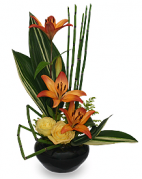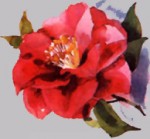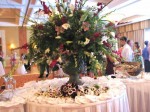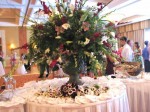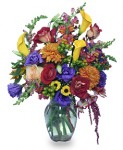In the Victorian Era, flowers were used as a means of communication. Each flower had it’s own, particular meaning and bouquets were used to send coded messages. People today still send flowers chosen specifically for their flower meanings.
Not only did the Western world have its own coded, flower language, the East had one as well— Hanakotoba, the Japanese language of flowers. Although, obviously not as popular today as it once was, Hanakotoba is still used in many Japanese movies and animations.
|
Kanji |
English |
Meaning |
| アマリリス | Amaryllis | Shy |
| アネモネ | Anemone (white) | Sincere |
| 椿 | Camellia (red) | In Love |
| 椿 | Camellia (yellow) | Longing |
| 椿 | Camellia (white) | Waiting |
| カーネーション | Carnation | Passion |
| 桜 | Cherry Blossom | Kind/Gentle |
| 黄菊 | Chrysanthemum (yellow) | Imperial/Elegant |
| 白菊 | Chrysanthemum (white) | Truth/Self-Esteem |
| 水仙 | Daffodil | Respect |
| 天竺牡丹 | Dahlia | Good Taste |
| 雛菊 | Daisy | Faith |
| 勿忘草 | Forget-Me-Not | True Love |
| フリージア | Freesia | Immaculate |
| 梔子 | Gardenia | Secret Love/Pure |
| 紫陽花 | Hydrangea | Pride |
| アイリス / 菖蒲 | Iris | Noble Heart/Good News |
| 白百合 | Lily (white) | Purity |
| 百合 | Lily of the Valley | Sweet/Promise of Happiness |
| 鬼百合 | Tiger Lily | Wealth |
| マグノリア | Magnolia | Natural/Love For Nature |
| 雛芥子 | Poppy | Comfort |
| 紅薔薇 | Rose (red) | Love/In Love |
| 薔薇 | Rose (white) | Innocence/Devotion |
| 桃色薔薇 | Rose (pink) | Trust/Confidence |
| 黄色薔薇 | Rose (yellow) | Noble |
| チューリップ | Tulip | Charity/Trust |
Contact your local florist today and ask for an arrangement using your favorite Hanakotoba flower meanings.
This post is brought to you by local Honolulu Hawaii Florists.
Not in Honolulu? No worries, use Flower Shop Network’s handy directory of local florists to find a florist near you!


 Find Your
Find Your 